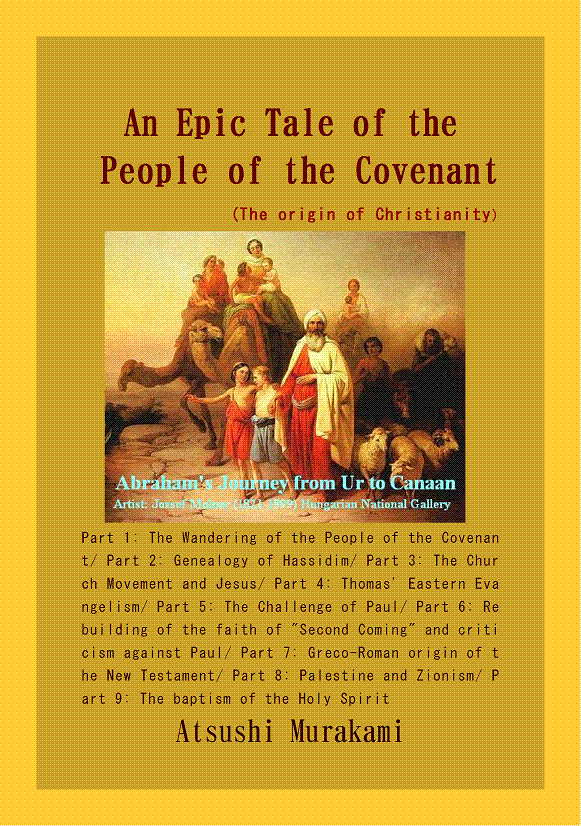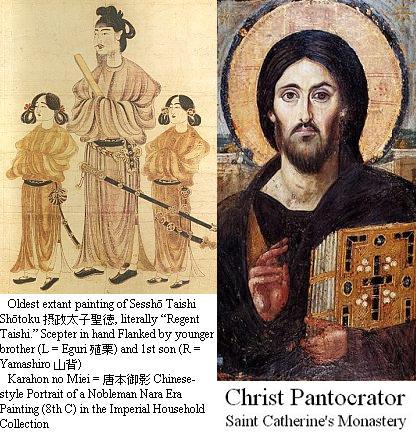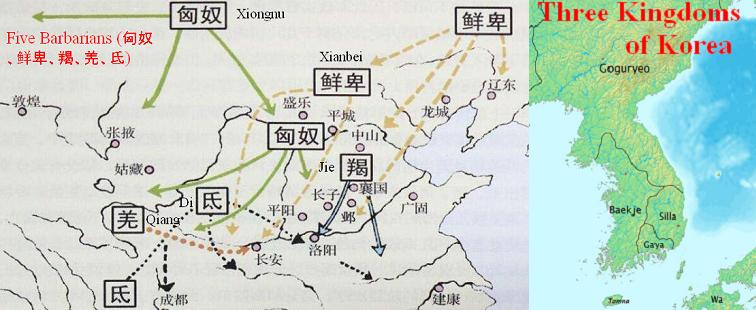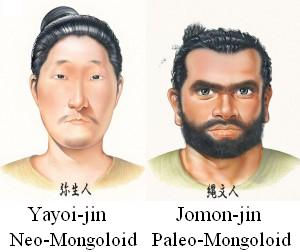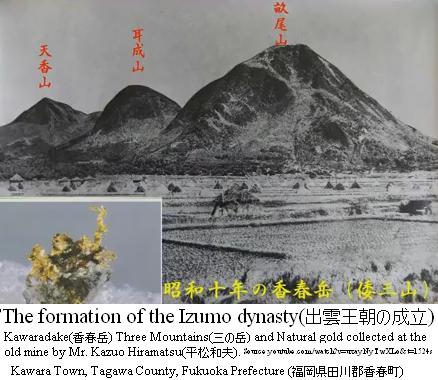Review:The baptism of the Holy Spirit (Aramaic roots IV)
Isa (Jesus), son of Mary, said: "This world is a bridge. Pass over it, but build no houses on it." (Quran) After conquering the Gujarat region, Akbar the Great (1556-1605), the third emperor of the Mughal Empire, who aimed for coexistence with other religions and peaceful unity of the world based on his ideal of Din-e-Ilahi (the religion of God), had transcribed on the wall of Buland Darwaze, Arc de Triomphe at the capital city of Fatehpur Sikri, the Quranic inscription: "Isa (Jesus), son of Mary, said: This world is a bridge. Pass over it, but build no houses on it. He who hopes for an hour may hope for eternity. The world endures but an hour. Spend it in prayer, for the rest is unseen."
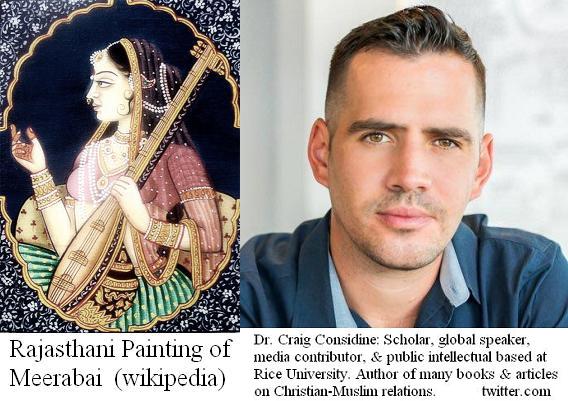
According to Dr. Craig Considine, a professor based at the Department of Sociology at Rice University, Akbar invited theologians, poets, scholars and philosophers of Christian, Hindu, Jain and Zoroastrian faiths to his court to carry out a dialogue about religion throughout his rule. And he built the Ibidat Khana, or 'House of Worship' in the city of Fatehpur Sikri, a town located about 37 km west-southwest of Agra District of Uttar Pradesh, as an edifice where people of all religions could gather to participate in interfaith dialogue. He abolished the jizya, or poll tax on non-Muslims, and allowed for conversions to and from Islam. He not only married women of various faiths, such as Jodha Bai, a Hindu, and Maria Zamani Begum, a Christian, but also let Murad, a son born between he and Begum, preach the New Testament in his court. Allegedly, Murad started his New Testament lesson by stating "In the name of Christ" instead of the usual Islamic gesture "In the name of God." King Akbar also went to a hindu temple to hear the songs of Mirabai, the wife of his rival Prince Bhoka Raj of Mewar Kingdom, and deeply inspired by Mirabai's soulful music about God, Akbar went to place a diamond necklace at the feet of statue of Lord Krishna, a Hindu God, as a sign of respect. Akbar's tribute to Mirabai is a symbol of his willingness to be open to cross-cultural interaction as a means of building bridges across religious barriers, according to Professor Considine.
Although this passage of the Quran exists intact as it is neither in the canon nor in the apocrypha of the New Testament, it was probably included in the Q Gospel, which was transmitted to India, too, by Thomas. Jesus says in the Gospel of Thomas, verse 42, "Be passersby," and Paul also preaches in the Second Epistle to the Corinthians "those who use the things of the world, as if not engrossed in them. For this world in its present form is passing away. (1Co 7:31)."
According to Mr. Sasagu Arai, author of the Japanese version of The Gospel of Thomas, Paul's these words are presupposed the approach of the "end." In contrast. for Jesus in the Gospel of Thomas, "the Kingdom" is already realized in those who know the Self (Thomas 3,67,113). Therefore, he encourages us as a Gnostist, "Don't get caught up in the events of non-essential this world, but rather become "the one who is passing by."
Jesus is the type of Prince Shotoku
From the Christian theology, if the preordained certain persons, events, and institutions of the Old Testament bear to corresponding persons, events, and institutions in the New Testament, what is depicted in the Old Testament is called "type" and corresponding description in the New Testament is called "antitype." So it might be said that Jesus Christ was the "type" that the New Testament planned for the birth of Prince Shotoku in Japan, in other words, Prince Shotoku was "antitype" of Jesus Christ.
During the period from the Yayoi Era (弥生時代BC10C.-AD3C.) to the Taika Reform (大化の改新AD645), the upheaval of the change of dynasties and the invasion of nomads in China spread to the Korean Peninsula, and a large amount of immigrants rushed into the Japanese archipelago. It was a time of gale storms for Japan. The indigenous people, called Jomon-jin (縄文人: native Japanese lived in 16,000–3,000 years ago), were compelled to accept these immigrants, who flocked in with ironware, farming techniques and equestrian customs. The Yamato Imperial Court (大和朝廷), born late in this period, seems to have been generally openly and aggressively embraced advanced foreign culture. However, during Prince Shotoku's era, the Yamato court was forced to navigate difficulties, with the powerful clans linked to the Baekje (百済) and Silla (新羅) of the Korean Peninsula, the Sui Dynasty (隋朝) in China, and even the Central Asian dynasties.
Ancient exchanges of Japan, China and Korean Peninsula
Here, let's look back on the exchanges between ancient Japan and China and Korea from Chinese records.
≪1027 BC-770 BC (Western Zhou Dynasty:西周)≫ During Zhou King Cheng (成王)'s era, the country was well ruled and peaceful. The Vietnamese (越裳) donated white pheasants and the people of Wa (倭: General name of the Japanese archipelago in ancient China) contributed herbs (鬯草). However, eating the white pheasants and taking the herbs did not prevent evil matters. <論衡(Lun heng: Discourses in the Balance)>
≪770 BC-475 BC (Eastern Zhou Dynasty: 東周the Spring and Autumn period: 春秋時代)≫ But the eastern barbarians (東夷) were naturally obedient and different from the other three sides. Therefore, when Confucius (孔子) lamented that the humanity had been gone, he said, "If I could float on the sea, I would like to live in the nine barbaric lands." There was a reason. It has been said that there had been hundreds of Wa nations across the sea of Le lang (楽浪: Near current Pyongyang) and their envoys had come to see our emperors. <漢書地理志燕地条:Book of the Later Han, Geographica the land of Yan>
≪475 BC-222 BC (Eastern Zhou Dynasty: 東周 the Warring States period: 戦国時代)≫ There are 24 countries of Dong-ti people (東鯷人) in the waters beyond Huiji (会稽: Near Shaoxing City of Zhejiang Province). There are also Yizhou (夷州) and Chanzhou (澶州). There is a following legend; "Qin Shi Huang (秦始皇), the first emperor of unified China, ordered a sorcerer called XuFu (徐福) to go to Penglai Country (蓬莱国) and obtain the medicine for perpetual youth and longevity. XuFu took thousands of boys and girls and crossed the sea, but failed to obtain the medicine. XuFu was afraid of being executed, stayed in the country and did not return." For this reason, the number of people in the country has grown to several tens of thousands over several generations, and occasionally come to Huiji (会稽) and trade. Some people living in Dongye district (東冶県) of Huiji (会稽) some time drift to Chanzhou (澶州) but they cannot travel back and forth because it is too remote place. <漢書地理志呉地条:Book of the Later Han, Geographica the land of Wu>
≪In 57 C.E.,≫ Nakoku (奴国) of Wa (倭) was awarded a gold seal by Emperor Guangwudi (光武帝) of the later Han Dynasty (後漢).
≪In 107 C.E.,≫ Suishou (帥升), the king of Wa, sought an audience with Emperor Andi (安帝) of the later Han.
≪During the period from 146 to 189 C.E.,≫ a turbulence occurred in the country of Wa, but when the woman named Himiko (卑彌呼) took the throne, the turbulence subsided.
≪In 173 C.E.,≫ Himiko dispatched a mission to Silla (新羅) in Korea. [At that time the country was colled Saro (斯蘆) or Sara (斯羅) until 504 C.E. when the country name was standardized into Silla (新羅).]
≪In 193 C.E.,≫ about 1,000 people of Wa emigrated to Silla.
≪In 203 C.E.,≫ Wa troops invaded Silla.
≪In 232 C.E.,≫ Wa troops surrounded Silla's royal capital, Gyeongju (金城), but Silla repelled it. The number of Japanese war dead and prisoners was as many as 1,000.
≪In 233 C.E.,≫ Wa troops invaded Silla again, but they were annihilated by a fire attack.
≪In 239 C.E.,≫ Queen Himiko dispatched a mission to Wei (魏) and was awarded a gold seal and 100 bronze mirrors for 'Pro-Wei Japanese King (親魏倭王).'
≪In 240 C.E.,≫ Himiko died and the civil war occurred again in Wa. Wangqi (王頎), Governor of Daifang Commandery (帯方郡太守) of Wei, dispatched a messenger called Zhangzheng (張政) and tried to arbitrate them. Later, when a woman named Iyo (壹與), a relative of Himiko, took the throne at the age of 13, the conflict subsided.
≪In 243 C.E.,≫ Iyo, the Queen of Wa, sent eight people, including the high stewards Iseeki (伊聲耆) and Ekiyaku (掖邪狗), as envoys to Wei, during which Ekiyaku was given an official seal for the Lieutenant Colonel of the Imperial Guard (率善中郎将).
≪In 246,≫ Emperor of Wei gave Nashime (難升米), the envoy of Yamatai-Koku (邪馬台国), a yellow banner via Daifang Commandery.
≪In 247,≫ Yamatai-Koku sent Saishi (載斯), Uotsu (烏越), and others to the Daifang Commandery to report about a dispute with the state of Kuna (狗奴国). Zhangzheng, Daifang Commandery envoy of Wei, visited Wakoku, gave Nashime an Imperial Rescript (詔書) and a yellow banner.
≪In 249 C.E.,≫ an envoy of Wa killed Seok Uro (昔于老), Soburuhan (舒弗邯:the highest officer) in Silla.
≪In 287 C.E.,≫ Wa troops invaded Silla and captured 1,000 Silla soldiers.
Thereafter China entered the age of so-called the 'Period of the Five Barbarians and Sixteen Kingdoms (五胡十六国)' and during this period various nomads invaded northern China and built their own dynasties and competed with the southern dynasties of Han people. Thus Wa does not appear in Chinese records for about 150 years since then. In the Korean Peninsula too, the Goguryeo (高句麗), built by Maek people (貊人), one of the Tungusic nomads, became powerful, and competed with the southeastern Silla (新羅) and the southwestern Baekje (百済) and entered the era of Three Kingdoms of Korea. Baekje appears to have tried to counter the invasion of Goguryeo and Silla by strengthening its ties with Liang (梁), which was eager to promote Buddhism in southern China, and Japan.
The pronunciations of "邪馬台" should be "Yamato"
By the way, regarding Yamatai-Koku (邪馬台国) reigned by Queen Himiko (卑弥呼), the history books of China, including "The account of the people of 'Wa' in Wei shu of Annals of the Three Kingdoms (三国志魏志倭人伝)," "The History of the Late Han Dynasty (後漢書)," "The Book of the Liang Dynasty (梁書)" and "The Book of the Sui Dynasty (隋書)" indicate as "邪馬壹国," "邪馬臺国," "邪馬臺国" and "邪馬臺" respectively. There are two different types of notations, "邪馬壹国" and "邪馬臺国." In Japan, it has been pronounced "Yamatai-Koku" based on the latter. However, according to Mr. Akihiko Motoki (元木明彦), Vice Chairman of the Ishii Kojiki Study Group (石井古事記研究会), a Chinese character (漢字) usually consists of partial (偏) and body (旁) and its pronunciation is based on the body. So taking only the body, both "壹" and "臺" are pronounced "to(u)." Thus the pronunciations of "邪馬壹国" and "邪馬臺国" are same and it should be "Yamato," And also according to Mr. Shinzo Fukunaga (福永晋三), a Japanese ancient history researcher, the word should be pronounced as "Yamato" based on pronunciation of Manyo-gana (万葉仮名), a form of syllabary used in the Manyoshu (万葉集). If so, then
Yamatai-Koku was also a country of the Tensonn tribe (天遜族). In other words, it may have been a country built by people called 'Yehoamato,' who had come from a country called Yuzuki (弓月Yuegong) near the Lake Balkash in Central Asia and had been a descendant tribe of the ancient Israelites.

Zhou li (周里: the unit of distance of Zhou era) was used
Another notable point is that according to Mr. Shinzo Fukunaga, one li (里), the unit of distance used in "The account of the people of 'Wa' in Wei shu of Annals of the Three Kingdoms (三国志魏志倭人伝)," is 67.5 meters. This length of "li" was used in Zhou (周) dynasty's era and not in Qin (秦) dynasty's or in Wei (魏) dynasty's. For your reference, the length of "one li", used in Qin dynasty's era and in Wei dynasty's era were 405 meters and 72 meters respectively. According to Mr. Fukunaga, the Wei shu of Annals of the Three Kingdoms, the Book of the Liang Dynasty and the Book of the Sui Dynasty, etc., all seem to refer to the descriptions of the Book of the later Han Dynasty.
Wei's envoys visited to Yamatai-Koku and the editor of the Book of the later Han Dynasty don't seem to measure the distance from Lelangjun (楽浪郡Near Pyeongyang) and Daifangjun (帯方郡 Near Seoul) to various parts of Wa intentionally using the "li" used in Zhou dynasty's era. Probably, it was recorded according to the statements of Wa people. However, it is impossible to say that indigenous Japanese in Jomon and Yayoi eras measured the distance from various parts of the Japanese archipelago to China and Korea using the Pythagorean theorem or the surveying technology based on Haidaosuanjing (海島算経: Sea Island Mathematical Manual). But, as early as during the Zhou dynasty era, people of Wa offered medicinal herbs to King Cheng (成王) and traded in Huiji (会稽), Zhejiang Province (浙江省). These people of Wa must have been different ethnic groups who had flown into the Japanese archipelago via the Korean Peninsula. They would have included Yehoamato tribe who had come all the way from the shores of Lake Balkhash in Central Asia.
Another theory: Yamatai-Koku was on the Shikoku Mountains
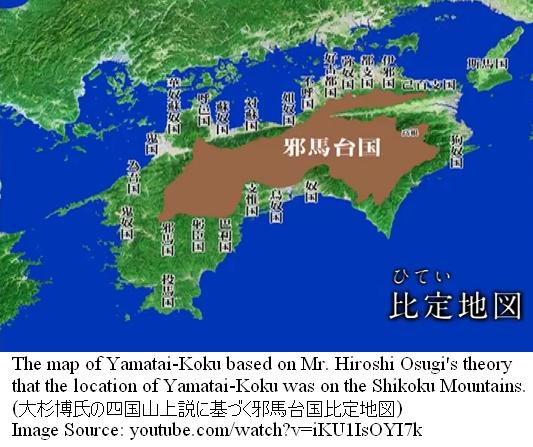
Regarding the location where the Yamatai-Koku existed, "the theory of Kitakyushu (北九州)," which had been the base of many of immigrant clans who came via the Korean Peninsula and has the myth of Tensonkorin (天孫降臨the sun goddess's grandson's descent to earth), and "the theory of Kinai (畿内)," where the Yamato court was established, have been considered prominent. However, both theories had the difficulty that the Wei envoys' itinerary described in "The account of the people of 'Wa' in Wei shu of Annals of the Three Kingdoms (三国志魏志倭人伝)" was different from the actual geographies of these two regions. However, recently, the "theory of Shikoku Mountains (四国山上説: Yamatai-Koku was on the Shikoku Mountains.)," which matches the description of "The account of the people of 'Wa' in Wei shu of Annals of the Three Kingdoms" (including the itinerary), has been spotlighted. However, in this theory, one li (里) seems to be set at 76-77 meters. According to Mr. Hiroshi Osugi (大杉博), who advocates this theory, the residents of Yamatai-Koku were mainly living on slash-and-burn agriculture in the mountains. This lifestyle conforms to the description of "The account of the people of 'Wa' in Wei shu of Annals of the Three Kingdoms," and can be said to follow the tradition of the Jomon people (縄文人) who relied on primitive farming. However, the description of "The account of the people of 'Wa' in Wei shu of Annals of the Three Kingdoms," that they did not use horses and cattle, seems to be incompatible with the lifestyle of the nomad Yehoamato, who came from Yuzuki (弓月) near the Lake Balkash.
Only 10% of genetic information of modern Japanese came from Jomon people
Protestant Bible commentator Mr. Arimasa Kubo points out that as for the genes of the Y chromosome (that only males have) of modern Japanese, Haplogroup D is 40%, O is 50% and the remaining 10% is Haplogroup C and others. According to him, the Jomon people had no outbreak in the Japanese archipelago but they themselves were migrants. They were not single ethnic group, too, but several ethnic groups and tribes.
Michael F. Hammer, an assistant professor at the University of Arizona in Tucson, and Mr. Satoshi Horai (宝来聡), a scientist of the National Institute of Genetics in Japan (国立遺伝学研究所), looked to the Y chromosome for an answer to the question of Japanese origins and found that the Y Alu polymorphic (YAP) element is present in 25% of the whole Japanese, in 90% of Ainu, in 50% of Okinawans, in 1% of each Koreans and Chinese respectively and in 50% of Tibetans.
Mr. Hammer pointed out that when Alu entered into Y chromosome in Central Asia 50,000 years ago, the Jomon ancestor seems to have been born there.
[In 2000, M. Hammer, et al. conducted a study on 1371 men and definitively established that part of the paternal gene pool of Jewish communities in Europe, North Africa and Middle East came from a common Middle East ancestral population. In a study of Israeli Jews and Palestinian Muslim Arabs, more than 70% of the Jewish men and 82% of the Arab men whose DNA was studied, had inherited their Y chromosomes from the same paternal ancestors, who lived in the region within the last few thousand years. (Wikipedia)]
According to Mr. Horai, it is suggested that YAP+ chromosomes migrated to Japan with the Jomon people 10,000 years ago and that a large infusion of YAP- chromosomes entered Japan with the Yayoi migration starting 2,300 years ago.
According to Atsushi Tajima (田嶋敦), an assistant professor of Tokai University, Haplogroup D and D2 and C1 distributed in Ainu are considered to be the genotypes of the Jomon people, and C3 is also possible.
According to molecular anthropologist Dr. Mitsuru Sakitani, Japanese people are famous for having a high frequency of Haplogroup D of Y chromosome DNA. Except for the Japanese, only Tibetans and people in the Middle East have this DNA worldwide. Japanese people, from the Ainu to the mainland Japanese and Okinawans, are basically based on northern Paleo-Mongoloids and are different from East Asian countries such as China and Korea, who are basically based on Neo-Mongoloids.

The classification of old and new Mongoloids is based on their experience of adaptation to the ice age. The neo-Mongoloids adapted to cold weather in northern Asia during the glacial period, and as a result have unique morphological characteristics such as flat and undefined features of face and single eyelid. By contrast, Paleo-Mongoloids are said to be relatively short, and have finely chiseled features, most times double eyelids and much body hair. Paleo-Mongoloids further divide into northern and southern branchs. The Northern Paleo-Mongoloids, which had originally widely distributed throughout Asia, are said to have been gradually eliminated in areas other than the Tibetan Plateau and the Japanese archipelago.
On the other hand, the author of 'Choh Nihonshi (超日本史:Ultra-Japanese History)' and commentator Mr. Makoto Mogi (茂木誠) points out that the ratio of Southern Chinese origin maternal gene 'mitochondrial DNA group D' held by residents of the Japanese archipelago was just 20% in Jomon period but went up to 50% in Yayoi period and then came down to 40% for modern Japanese people.
These facts suggest that a large amount of Southern Chinese flowed into the Japanese archipelago during the Yayoi period. In other words, it can be said that the majority people of the Japanese archipelago during the Yayoi period was occupied by Southern Chinese. Later, if the ratio dropped by 10 points to 40%, there seems to have been a huge influx of other types of migrants (perhaps Koreans, northern Chinese, nomads, etc.) beyond the possibility of a sharp increase in Jomon people.
In any case, the genetic information of Japanese people also suggests that different ethnic groups flowed into the Japanese archipelago via the Korean Peninsula during the Yayoi period. Although the indigenous Jomon people became a minority in this way, according to a recent report from the University of Tokyo research team, the number of Jomon people, which had once declined due to factors such as cooling of the climate, seems to have increased sharply again in the Yayoi period, benefited by advanced technologies such as rice cultivation.
Researchers at the National Museum of Nature and Science and six other institutions, who had launched an anthropological project to investigate the genetic origins of the Japanese, reported "Modern Japanese people have inherited about 10 percent of the DNA present in a Jomon woman," in a paper titled, "Late Jomon male and female genome sequences from the Funadomari site in Hokkaido, Japan," published in the journal 'Anthropological Science' in May 2019.
Formation of Yamato ethnic consciousness
According to Shinzo Fukunaga, the Izumo kingdom (出雲王国) of Susano (須佐之男命) was destroyed by the Tenjin tribe (天神族), whose ancestor was Nigihayahi (饒速日命), and Himiko's Yamatai-Koku (邪馬台国), which had succeeded Tenman-Wa-Koku(天満倭国=奴国) built through destroying Tenjin tribe by Emperor Jinmu (神武天皇), was destroyed by Empress Jingu (神功皇后). It seems that the Tenson tribe (天遜族: descendants of the sun goddess), who had descended on Takachiho no Mine (高千穂の峰) in Kyushu (九州), merged with Izumo Kingdom and Yamatai-Koku, during they expanded their sphere of influence to Kinki region (近畿地方).
What is worthy of note is that the early recognition themselves as Yamato tribe was established among powerful clans in Kitakyushu, Shikoku and even Kinki regions. If so, Yehoamato tribe, who had lived on the shores of Lake Balkhash, seems to have come along with a large kin and established symbiotic relationships with Jomon people from all over the Japanese archipelago, before the Chinese and the Korean's arrival and traded with the continent and played the role of priming water to bring other ethnic groups into Japan.
Because the authentic history Book of Han Dynasty (漢王朝), the Global Great Empire on par with Rome, promoted worldwide existence of the paradise of Horai (蓬莱) and naturally obedient people of Wa (倭) in the sea of Le lang (楽浪) quoting the words of the Confucius and the episode of Emperor Qin (Qin Shi Huang秦始皇), huge refugees tired of the war, not only from Northeast Asia but also from Central Asia, seem to have come into the Japanese archipelago. As a result, the indigenous Jomon people quickly became ethnic minorities. Fortunately, the Jomon people were distributed almost evenly from Hokkaido in the north to Okinawa in the south and they were doing regional trade activities before the Yayoi period. Thus it is likely that the migrant groups needed the help of Jomon people to establish their living bases in the Japanese archipelago. For this reason, different groups of immigrants very likely began to use Jomon people's language as intermediaries among them.

Mr. Kubo pointed out that according to Nihonshoki (日本書紀), Emperor Jinmu (神武天皇) said, "Hakko ichiu (八紘一宇: The world is a family under one roof)." Seemingly, 'the king of Samaria, the noble founder of the Ephraim tribe of Yahweh: Kamu Yamato Iware-hiko Sumera-mikoto' came to the Japanese archipelago with the ideal of 'Hachiko Ichiu,' before Moses led the Jewish people and escaped Egypt. His ideal of 'Hachiko Ichiu' seems to have been inherited in 'the Seventeen-Article Constitution (十七条憲法),' of which utmost priority was put on harmony, issued by Prince Shotoku, and in Emperor Akbar's Din-e-Ilahi, or 'the religion of God,' under which all religions should be reconciled.
By the way, before the war, on December 6, 1938, the Japanese government decided on the "Summary of Jewish Measures" for the protection of Jews, stating that "exclusion of Jews does not conform to the spirit of 'Hakko Ichiu' of racial equality." This was due to the Incident that Major General Kiichirou Higuchi (樋口季一郎), then head of the secret service in Harbin (ハルピン特務機関長), acknowledged about 20,000 Jewish refugees stuck in Otpor, a border area between Manchuria and the Soviet Union, to enter Manchuria.<To be continued>
What is "Baptism with The Holy Spirit"?
According to the dialectic of the Gospel of John,
【Thesis】"A man can possess eternal life through accepting testimony of the Son of man and being baptized by him." (John 5:24)
【Anti-thesis】But "The one who comes from the earth cannot accept the testimony by one from heaven." (John 3:32)
How then can a man possess eternal life?
【Synthesis】"If you want to be baptized with the Holy Spirit, you can just go back to the word which was with God in the beginning (John 1:1) and certify that God is truthful. (John 3:33)"
When he said, "You are Huichao," Zen Master Fayan thrusted vivid Self in Huichao in front of his eyes.
Purchase here One world:AD-SEAnews
Your Comments / Unsubscribe
SEAnews Messenger
SEAnewsFacebook
SEAnews eBookstore
SEAnews world circulation










